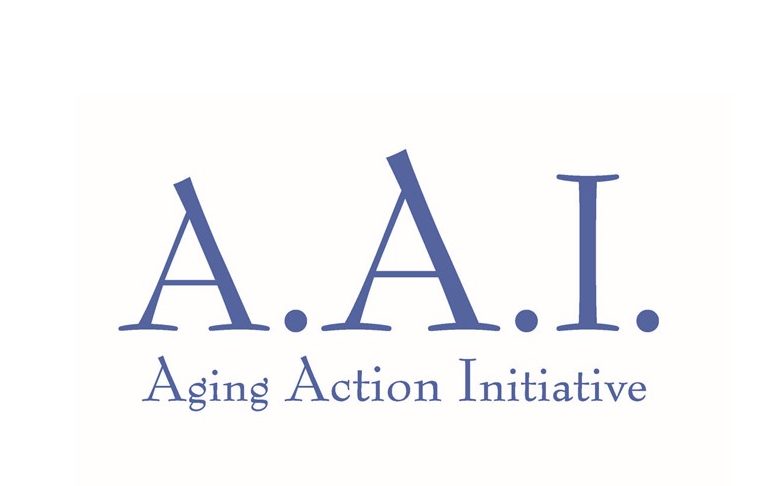February 24, 2017 | AAI interviewed member Leslie Klor, Director of Shared Housing for Senior Resources, a Program of Episcopal Senior Communities. She talks about shared housing, its impact on our senior community and how to achieve an age-friendly Marin.
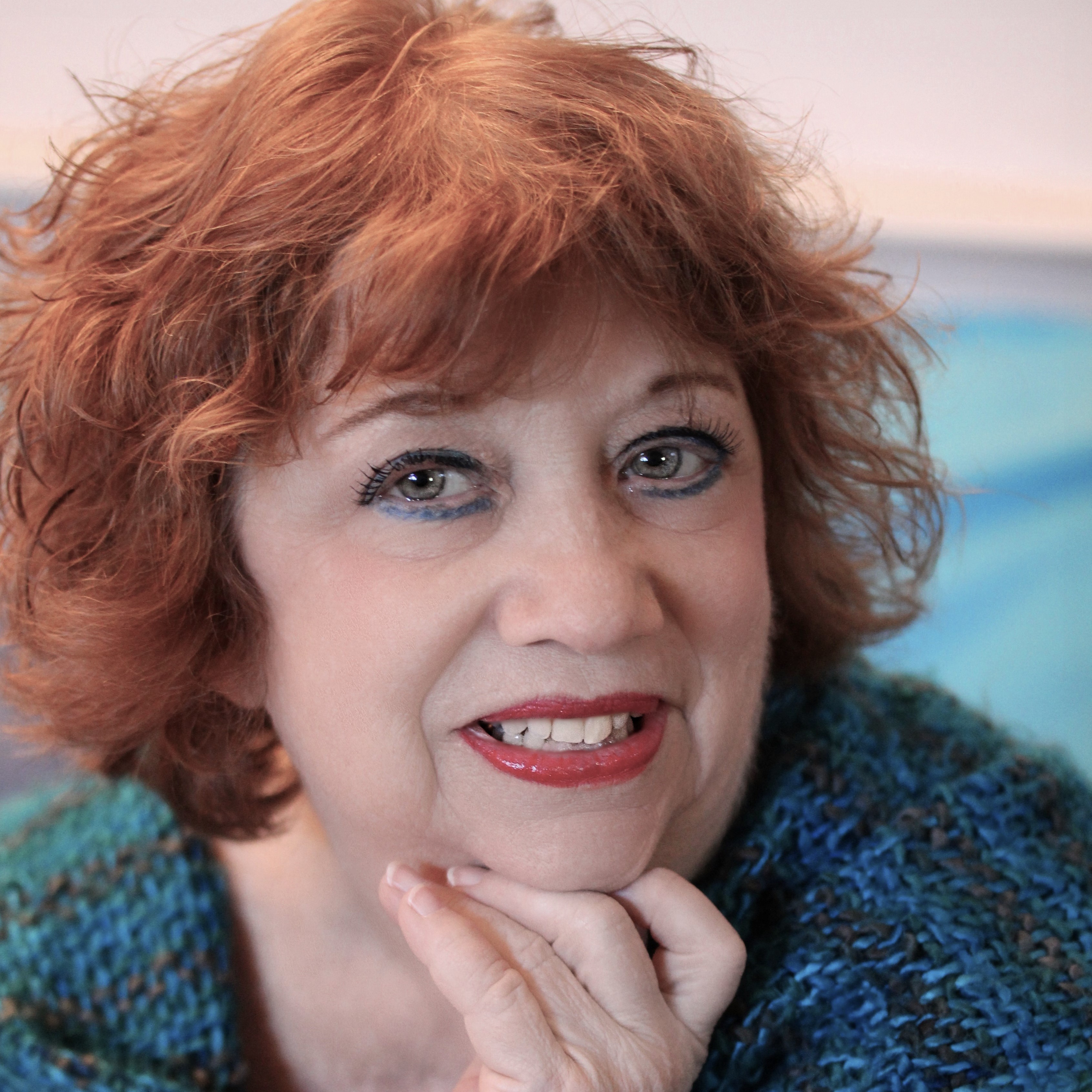 What do you do for Episcopal Senior Communities?
What do you do for Episcopal Senior Communities?
I’m Director of a program called Shared Housing. It’s not a new concept. Not that long ago, lodgers lived in boarding houses where they could rent a room and maybe have meals. Today’s homeshare is where two people match up, one with a house and the other needing a home. Homeshares are now scattered across the United States, and for the last five years, here in Marin.
How did you get into this kind of work?
I started with Innovative Housing over 20 years ago, and found out how difficult it is to create affordable housing. Innovative Housing created and built five intergenerational-shared homes in Fairfax—the Vest Pocket Community. It really was an innovative concept created for low-income seniors and single parents with 1-2 children.
My role was to place the tenants but I was there from the beginning. I sat through the whole process of what it took to get them built: planning, town council meetings, pushback from neighbors. Neighbors envisioned ambulances and fire trucks day and night, and people shooting up on the sidewalk. The number one difficulty was the resistance from neighbors. Building affordable housing really is an endurance test for those seeking to do it.
Why Shared Housing?
There are many wonderful benefits! It uses existing housing, so there’s no fighting about a new building. It helps seniors who need extra help or extra income. It helps people who are isolated in their homes. It helps older residents keep living in their home. And, it helps people who want a place to live in Marin. Shared housing solves the need of both homeowners and home seekers.
How does the Episcopal Senior Communities Shared Housing program work?
It serves seniors 50+. I match home owners who are looking for extra money by renting out a room or who need services such as driving to doctor’s appointments, grocery shopping or cooking with home seekers who are looking for a room to call their own.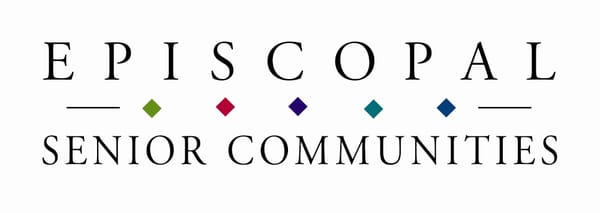
I visit each home-owner who has a room to rent to get a feel for their needs and interview each person seeking a room. All parties fill out applications, forms for a background search and release of liability forms. When a match is made, we all meet to fill out a Living Together Agreement which spells out amount of rent, house rules, service exchange duties and other details.
The agreements are month to month and usually do not require security deposits and I am always available for troubleshooting.
How does the Shared Housing Program help older adults in Marin?
Most seniors want to age in place (remain in their own homes). Our goal is to help homeowners achieve that by providing, through the renters, added income, services and companionship.
I just met with an 80-year-old homeowner who owns a beautiful home on a hill. I shared information about homeshares and about places to move to from Choices for Living. She came with questions, and left with options!
 As for the older adult renters who want to stay in Marin, we provide the security of renting a room at an affordable rent or giving an exchange of services so that they can remain here. The majority of seekers live on Social Security, with an average of $900 month. Renters don’t have much money left over after they pay for their housing. In a homeshare, a seeker can rent a room, or can provide services in exchange for reduced or free rent. Services can be things like driving to appointments or activities, cooking, and companionship. One example is a tenant who is a ‘night guard’ for a 100-year-old homeowner. Service providers come in during the day, and the tenant is there at night, for peace of mind.
As for the older adult renters who want to stay in Marin, we provide the security of renting a room at an affordable rent or giving an exchange of services so that they can remain here. The majority of seekers live on Social Security, with an average of $900 month. Renters don’t have much money left over after they pay for their housing. In a homeshare, a seeker can rent a room, or can provide services in exchange for reduced or free rent. Services can be things like driving to appointments or activities, cooking, and companionship. One example is a tenant who is a ‘night guard’ for a 100-year-old homeowner. Service providers come in during the day, and the tenant is there at night, for peace of mind.
One of my favorite stories is about a condo owner in Peacock Gap. She has provided rooms to three tenants who lived with her until they were able to secure an affordable senior housing unit.
I also meet people for housing counseling. Twice a month I’m available to talk with people about their housing questions. People feel horrible when they don’t know what to do, and I help them know their options.
How have you been involved in Aging Action Initiative?
Last year I was invited to be a speaker at an AAI Inform & Connect workshop for frontline service providers. The workshop turned out to be a valuable outreach effort—that we need to continue. The public needs to know how to make their lives easier and joyful. How nice it is when people know what resources are out there. I just learned about SparkPoint. It’s a one-stop place for low-income residents to get a full range of free services—they even have food! Lilypad helps homeowners convert a bedroom to an independent unit. And another marvelous program is the Marin Housing Authority’s Residential Rehabilitation Loan Program—they provide low-interest loans for home repairs.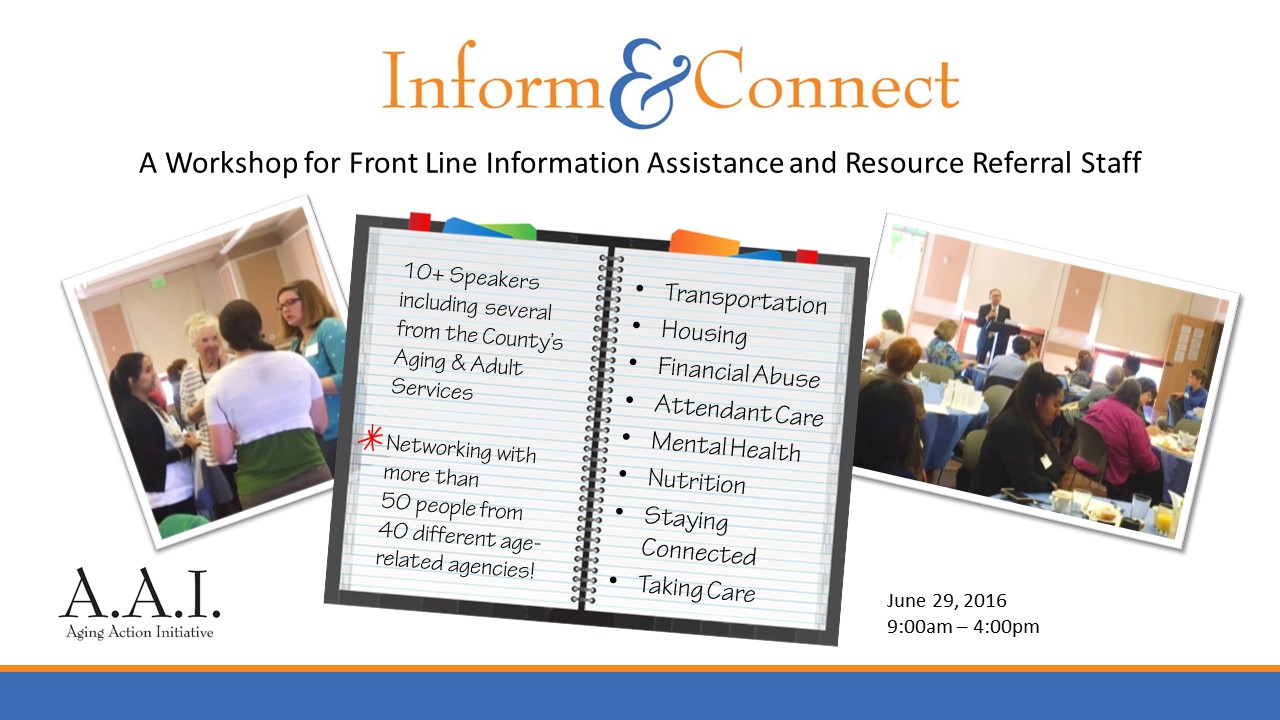
Other groups I’ve learned about through the Aging Action Initiative: Jewish Family and Children’s Services, Marin Villages, West Marin Senior Services, and so many more it’s hard to list them all. It is like a Who Who’s list of all the crucial organizations in Marin that contribute to the welfare of our senior citizens.
How has collaboration helped you do what you do? Specifically your relationships/partnerships in or out of the AAI network:
Collaboration has helped me do what I do because I can count on other community services for referrals and information sharing. The more agencies that know about our services, particularly the AAI network, the more the word spreads about our Shared Housing program. That outreach is crucial to sharing these valuable senior resources. In turn, I inform my clients of other services available to them. Partnerships are invaluable. When we support each other, we support the seniors in our community.
What is your vision of an age-friendly Marin?
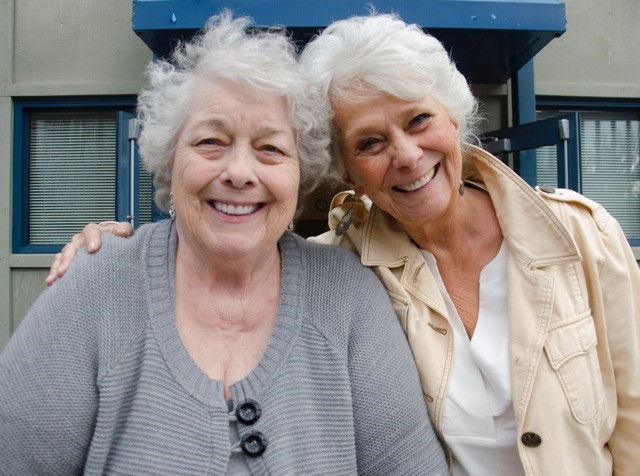 Seniors are living longer and want to stay in their homes. Marin County is resource rich. We have the resources to help our seniors age in place. Many of our seniors are hidden in their homes and isolated. We just need to help them find the resources. An age-friendly Marin is one that connects our seniors to the resources they need whether it’s help with income or forming friendships.
Seniors are living longer and want to stay in their homes. Marin County is resource rich. We have the resources to help our seniors age in place. Many of our seniors are hidden in their homes and isolated. We just need to help them find the resources. An age-friendly Marin is one that connects our seniors to the resources they need whether it’s help with income or forming friendships.
Episcopal Senior Communities (ESC) offers community services and programs improve the lives of more than 12,000 low-income and isolated seniors each year in programs and services from Monterey to Sonoma Counties. ESC’s mission is to “cultivate and build healthy communities with a continuum of residential and innovative aging services that actively promote intellectual, physical, social, and spiritual well-being”. For more information visit jtm-esc.org.
Aging Action Initiative (AAI) is a collective effort of over 65 different agencies, grassroots organizations, commission and neighborhood groups, funded by the County of Marin and coordinated by MARINSPACE, collaborating for an age-friendly environment. For more information visit agingactioninitiative.org or connect with us on Facebook.

